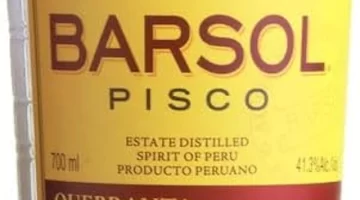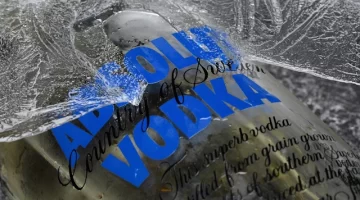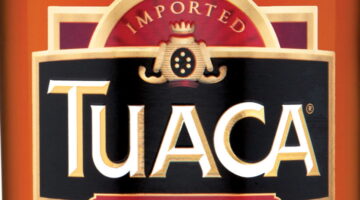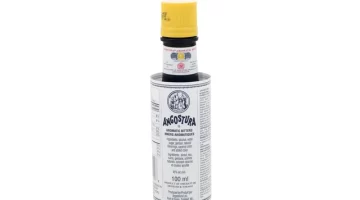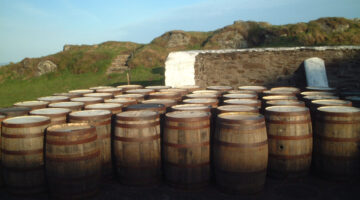Vodka Tasting Made Easy
Travel Distilled’s advice on Vodka Tasting Made Easy – how to sip it, how to cleanse your palate and other vodka-tasting tips.
If you’re planning to do a vodka tasting there are just a few simple things to know: it isn’t rocket science, and there are some similarities to wine tasting.
Chill your vodka
Tasting vodka that’s straight out of your drinks cabinet is not going to give you the best vodka tasting experience. You’re not aiming to have it at room temperature, and throwing a few ice cubes in will only dilute the drink and dilute the taste.
To chill your vodka for a vodka tasting, put the bottle into your freezer a few hours before drinking, to get it nice and cold. Some people keep their current go-to vodka permanently in the freezer, so you don’t even have to remember to do this. Vodka will not freeze in the freezer. It has a very low freezing point and you needn’t worry about the vodka freezing and splitting the bottle in even the coldest domestic freezer.
Some vodka experts maintain that you shouldn’t keep your vodka in the freezer. I disagree. The vodka taste is intensified if you drink it from the freezer. What I like to do is try it from the freezer first, then let it warm up a little so it’s at fridge temperature and sip it again. Then let it get to room temperature and try it once more. Finally, pop an ice cube or two in and try it again that way. Do a comparison test yourself, and you decide what works for you. If nothing else, trying it at different temperatures is a good excuse to pour a big shot, or two separate shots (see below about glasses).
Chill Your Glasses
You needn’t chill your glasses for as long as you chill your vodka, but pop them in the freezer an hour or so before you want to do your vodka tasting. You know how good it tastes when you order a beer and the barman pours it into an ice-cold glass? Works for vodka too.
Drink Your Vodka Neat
Drinking vodka neat is the only way to get the true flavor of the vodka. As stated above, ice cubes will affect the flavor, and what you’re aiming to do is get the pure flavor of the vodka. Ice melts quickly in vodka, and the flavor of the water from which the ice cubes are made will also affect the flavor of the vodka. Even if you make your ice cubes from the purest water, the cubes will still start to melt quickly, and will reduce the impact of the vodka’s flavor. Besides, you should taste vodka from a small glass, which should have no room for ice cubes anyway.
Use a Shot Glass
You’re aiming for a 2-3oz measure of the vodka, and a small glass. If you use a tall glass, more vodka will stick to the sides of the glass as you lift it to your mouth. You want the vodka to go straight from glass to mouth. You should fill the glass so there’s just enough room to swirl the vodka around a little.
Warm the Glass Slightly
You should warm the glass just a little in your hands, to take the chill off the vodka. As it’s straight from the freezer, it will be cold enough to freeze your taste buds as it hits them, and you won’t get the maximum taste. Cup the glass in your hands for a few seconds, to warm it ever-so-slightly, though you still want it cold.
Swirl the Glass
Swirl the vodka in the glass a little, to help release all the flavors. You’ll know that this works if you first smell the vodka before swirling, and then after swirling. The smells are more intense, just as they are with wine or whisky. Some vodkas will swirl smoothly, like water, while others will be a little creamier, more like an oil. One isn’t necessarily better than the other. You’re simply finding out what this particular vodka is like.

Look at the Vodka
You’re getting impatient to taste by now, but instead, hold the glass up to the light and check the vodka for clarity. There shouldn’t be any impurities, although not all vodkas are crystal clear. Some might have a slight color tinge to them. Others that have a slightly oily texture will probably also have a slightly thicker look to them.
Nose the Vodka
Stick your nose right in the top of the glass and take a strong sniff. With cheaper vodkas you often get a kind of medicinal alcohol smell. Better vodkas will be much purer, and neutral. Can you smell anything else? Common smells you can identify with some vodkas include vanilla, lemon, and liquorice.
Take Your First Sip
Take a small sip at first, letting the vodka sit in your mouth for a while, before swallowing. Some professional tasters breathe out through their nose, which allows the vodka aroma to spread. Then swallow and try to identify any flavors, while also considering the taste left behind in your mouth by the vodka.
Cleanse Your Palate
Some people recommend taking a drink of water at this point, to cleanse your palate before the next swallow. Some like lukewarm water, others prefer cold. Some prefer none at all, to retain the taste of the first sip of vodka in their mouth. At official tastings people often use bread to cleanse the palate.
Finish Your Glass
Knock the rest of the vodka straight back, in traditional Russian fashion. Consider the difference between drinking it straight down, and savoring it as you did with the first sip.
Take Notes
If you’re reviewing vodka or any other spirits, you have to take notes, writing down your impressions of the color, the aroma, the taste, the feel of the vodka in your mouth, the after-taste, and even the bottle. Even if you have no intention of reviewing vodkas, it’s good practice to take notes and do some comparison tests. Try two top-brand vodkas side by side, like Absolut and Smirnoff. Do they smell and taste the same? Buy a $10 vodka at the store and taste it alongside a $30 vodka. You certainly ought to be able to smell and taste the difference.
Keep a vodka-tasting notebook, to store your thoughts and help you decide which vodka gives you the best bang for your bucks. And remember, there’s no right or wrong as everyone’s palate is different. Do a tasting with your partner, or with some friends, and see if everyone agrees.
What’s most important is that you’re looking for a vodka which pleases you. You may discover a liking for potato vodkas, or wheat vodkas. It’s a good idea to try 2-3 vodkas during a typical vodka tasting. You can compare similar vodkas, like three different potato vodkas, or you could compare a premium vodka with a mid-range vodka with an inexpensive one. Some ‘inexpensive vodkas score better in tasting tests than more expensive ones, and you might find you prefer cheaper vodkas. You could also try a potato vodka, a wheat vodka and a rye vodka, sipping each in turn and looking for those subtle differences.
Or you might find the various vodka tasting steps too much bother, and be happy just to enjoy your vodka as a relaxing drink. But at least you now know how to taste vodka properly. Cheers!





